originally posted at https://canmom.tumblr.com/post/648554...
G’day, mateys! It’s time for Animation Night!
So, we’re coming up on #50 next week, which I’m planning to use as a big celebration of stop motion in all its diverse forms! More on that to come…
And what of this week? This week, I’m going to bring together two recent films unified more by technique than theme: both are using combinations of digital and traditional animation in fairly novel ways. Plus we’ve met all these creators before… which gives me a chance to witter on about animation and how it’s changing!

For one, we have Wolfwalkers, by the renowned Irish studio Cartoon Saloon - whose films we encountered previously on Animation Night #14. Their latest film, Wolfwalkers, is now out, fortunately returning to their safe ground of Irish history and mythology rather than their more dubious attempt to tell a story set in Afghanistan.
This film is notable for plenty of reasons… but one of the big ones is the beautiful ‘wolf vision’ sequences, which were accomplished by building forest layouts in Blender, printing them out on paper, and then drawing over them with pencils. With this method, enormously complicated camera moves could be drawn that would be nigh impossible even in Disney’s heyday, but with the kind of texture and elegant linework that computers can’t yet match.

The second example is Klaus, by Sergio Pablos Animation Studios - notably the studio that James Baxter landed in after he left Dreamworks (see Animation Night 43…). Sergio Pablos is another of those ex-Disney guys who were left to do their own thing after Disney shuttered its 2D animation department, and spent the years after working on CG films like Despicable Me. At some point, he rebranded his company ‘Animagic’ as ‘SPA Studios’, and set out to make a new traditionally animated film, Klaus, for Netflix.
In interviews, Pablos talks a big game about bringing 2D animation forwards - trying to imagine what it would look like if 3D hadn’t so completely taken over. In practice? This mostly seems to mean doing something pretty experimental with compositing/photography: feeding the drawings of 2D animators like Baxter into a complex digital shading process that makes them look more akin to 3D models. “How exciting!”, you might say, “this looks so much better than the usual attempts to automate shading in tools like After Effects! So how did they do it? What’s the algorithm?” The answer is… apparently completely proprietary to a certain French company, and so secret that he can’t divulge it to anyone. Boo. (All he says is that no 3D geometry is involved, and it depends a lot on the skill of the animator.)

SPA have a youtube channel with a lot of brief clips of what seems like a very interesting James Baxter lecture, and breakdowns of various shots from roughs and tiedowns through to the composite… but ngl, something about Pablos’s whole affect is very smug and corporate in a way that annoys me! The idea that a fancy compositing process is some giant leap forward for traditional animation is pretty dubious (Makoto Shinkai is right over there…). Still, still, it looks like a gorgeous film, riding as much on the absurd level of refinement that Disney-style full animation reached at the end as on the technical tricks. And if (as it seems) they’re going to train a new generation of traditional animators, so that those methods don’t die out with Baxter’s generation, that’s a really good thing.
‘Traditional animation isn’t dead’ is to some degree part of the marketing for both these films… but guys. Guys! Seriously. Traditional animation has only been considered ‘dead’ in America - it’s still going very strong in countries like Japan, France, China, South Korea… it would hurt nobody to acknowledge that others have been carrying the torch.
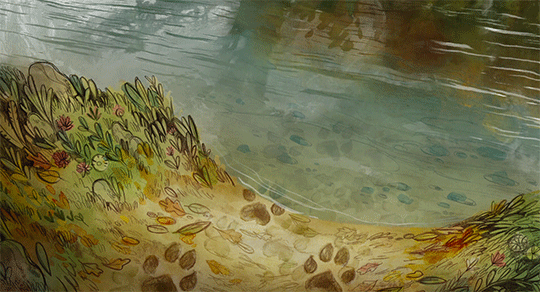
That said, the future does seem to be looking at a convergence of traditional animation and CGI. It’s already long, long been true that nobody paints cels anymore! (Fun historical tidbit: one of the last productions to use cels was the ultra-long-running family drama Sazae-san, which began in 1969 and is still going today with 2500+ episodes! It finally switching from cels to full digital compositing only in 2013.) The precise extent to which people use compositing effects varies, but it’s usually ‘quite a lot’.
More recently, the hot new thing has been 2D-in-3D animation - getting the character of a drawing with the ease of CG perspective. This is why Blender Grease Pencil is such a big deal, enabling films like J’ai Perdu mon Corps. Nowadays fancy shots in anime will almost always composite their characters into CG backgrounds (for example, a shot breakdown of a sequence in Tania the Evil) after films like Mononoke-Hime, GitS:SAC broke that 2D-3D compositing ground and later films Kisumonogatari expanded it into the basis of whole productions. The strength of the effect varies, but when executed well, like in MAPPA’s recently-finished Jujutsu Kaisen, it can look absolutely incredible. (Shame about the work conditions at MAPPA though!)
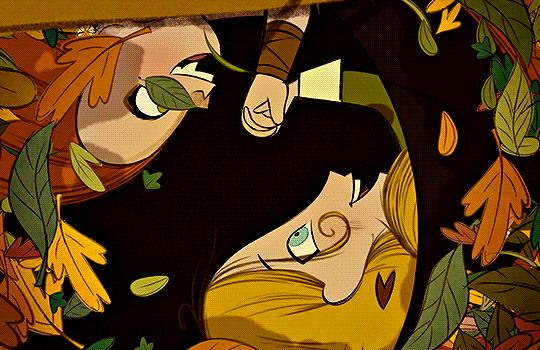
There’s also been the use of drawing to add a little extra character to CG animation, most notably Into the Spider-Verse (which we watched on Animation Night 21!). Belatedly, it does seem like studios might be getting over the ‘photorealism is always better’ ideology, and experimenting with more stylised takes - which often seems to mean one of these 2D/3D hybrid processes.
What’s the upshot of all this? Mostly this is all pretty exciting for me because combining drawings and cgi sits pretty squarely in my wheelhouse :p so hopefully it will mean I can get a job once I have something more of a demo reel. But also: visual experimentation, exciting! If computers can be the route to more styles of expression that weren’t possible before, rather than a way to impose an orthodoxy where everything has to look like a Pixar/Dreamworks knockoff, that’d be a really good thing…
OK, I’ve talked a lot about animation techniques - but these films, what are they about?
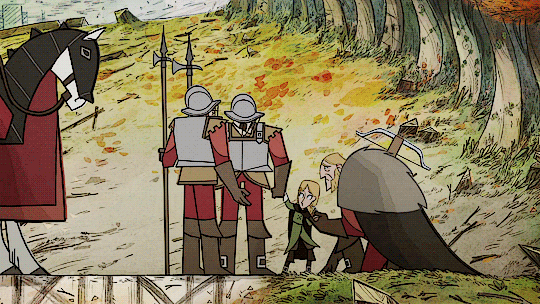
Much like Tomm Moore’s previous films (The Secret of Kells and Song of the Sea), Wolfwalkers takes its setting from Irish history and its look from medieval art, and its storyline plays with the interplay of mythology and painful everyday life.
This time we’re heading to the 1650s, a period of especially violent social transformation as the world plunged bloodily into modernity. It was a time of extreme and brutal warfare, with conflicts like the Thirty Years’ War seeing millions dead to famine and brutal war conditions like ‘push of pike’.
The British Isles were at this time having a series of civil wars, in which the forces of Parliament - led by puritan zealot Oliver Cromwell - fought the forces of King Charles I. Like any such conflict, it was a war of religion (which should be understood as something sort of akin to ethnicity), and a direct contest for coercive power between different blocs, but also a war over economic factors, like who would pay taxes to whom, and also about colonialism, particularly in Ireland, with the majority-Catholic Irish wanting English settlers to stop appropriating their land to build plantations kthx.
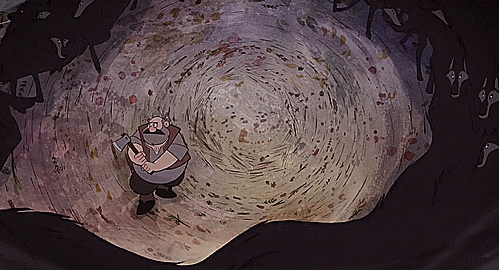
Parliament at this time was already divided into Houses of Lords (nobles and clergy) and of Commons (representatives from each town). Their job, as established through the Tudor period about a century earlier, was mostly to legitimise the monarch’s decisions to levy taxes. A strong monarch would have extensive influence and could easily pass the taxes they wanted; a weak monarch, not so much. Kings obviously did not like this state of affairs very much, and would often avoid calling Parliament except when finances were tight (e.g., when a war was going badly).
The instigating event was Charles trying impose a certain body of religious doctrine and patterns of authority known as ‘High Anglicanism’ on Scotland, against the Scottish Covenanter movement of Presbytarians (who are very Protestant as these things go), and throwing his weight around in religion with courts like the ‘Star Chamber’ - and also to add insult to injury, marrying a Catholic. All this was quite a touchy thing for the English monarch to do after Henry VIII, and it upset a lot of the more extreme Protestants in Parliament, especially the highly ascetic Puritan movement.

Well, we’re heading fast for a situation of ‘competitive control’ as the CIA say. Rebellion broke out in Scotland, but Parliament was not keen to levy taxes to support a war against protestants (and suspicious of the King) - so Charles sent them home and fought the war anyway, not very unsuccessfully. To fund the war, he turned to his buddy Tom Strafford, who levied funds from the Irish Catholic nobles. Strafford was also keen to support the King throwing his weight around in general.
But it was not enough cash, especially after an expensive peace setttlement, so after nine years of war, Charles called another Parliament, who wasted no time pressing their advantage and demanding various restrictions on the monarch’s power to levy taxes. Things were extremely tense, and the various factions competed to get each other executed - ultimately ending up with Strafford as the one sent to the Tower of London and executed, Charles signing the order out of fear for his life. For political reasons, all sides insisted they were still loyal to the King, and presented their grievances with an alleged Catholic conspiracy leading him astray - thus giving him a graceful way out if he would just pin it all on Strafford.
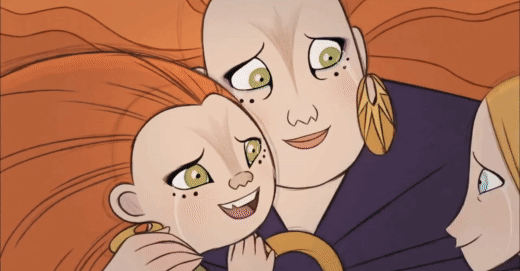
Here’s where Ireland enters the story in a big way. At this point, after centuries of complicated colonialism, the population of Ireland is split three ways: you have the ‘Gaelic Irish’, who are mostly Catholic, and two generations of English settlers: an ‘Old’ mostly Catholic one and a ‘New’ mostly Protestant one. All three of them were united by thinking Strafford was an asshole (for different reasons). The Catholics did not like his discriminatory laws, levying taxes without full political rights, and land seizures to make plantations. But the Protestants were in large part Presbyterians who weren’t fans of his Anglicanism. (Got all that?)
With Strafford dead though, the unity didn’t last long, and fighting broke out between the Protestants and Catholics, with massacres and ethnic cleansing - particularly in Ulster, which was part of the land seized for plantation by the Protestants, roughly ‘Northern Ireland plus a bit’ in modern terms.
This news sent the Protestants back in England into a right tizzy, terrified that there would soon be an Irish Catholic army marching around putting Protestants to death. Something had to be done to maintain the delicate balance of colonial power - but Parliament wouldn’t trust the King to lead it, who was more than a little suspected of conspiring with those dastardly Catholics in Ireland, surely wanting to raise an army to enforce his tyranical rule. Meanwhile, said King caught wind of a conspiracy between some members of Parliament and the Scots he’d lost a war against, and attempted to flex his power at a very bad time - and when Parliament wouldn’t give up the guys he demanded, he marched into the House of Commons with soldiers, only to learn they’d already escaped. This was, in such a situation, considered decidedly not on.
At this point that whole ‘monopoly on legitimate force’ thing had broken down. It was time to rev up the civil war engines and the Loyalists and Parliamentarians got out their pikes and muskets to settle it by force. I won’t go blow by blow over the details of the war, but it was a bloody one - the numbers (hundreds of thousands of deaths from disease and combat) don’t register today because the population was so small, but in England at least, 4% of the population died in comparison to about 2% in WWI.

In England, the war was rather decisively won by Cromwell’s “New Model Army” of full-time professional soldiers, and he went on first purge Parliament of the King’s supporters, and then to execute Charles I in 1649 and put himself at the head of a new ‘Commonwealth’. At this point he did stuff like banning Christmas (which at the time was something closer to a riot, which sounds cool as hell, but this was the kind of riot that would sometimes turn into a pogrom). ‘Cromwell banned dancing and Christmas’ is the bit they teach us about in an English school. Ha ha, those wacky historical people!
But Ireland was still in rebellion: the Irish Confederates, who had formed a new government, were fighting both Parliamentarians and Royalists, torching fields and such, though late in the war they made an alliance with the Royalists for less persecution once the monarchy was restored. (At one point the Confederates even invaded Scotland - without success).
The freshly purged ‘Rump Parliament’ - now having secured the monopoly on force in England - dispatched Cromwell to conquer Ireland for them. It was a much shorter war, with Cromwell carrying out some infamously brutal sieges and massacres like the ‘Sack of Wexford’ and ‘Siege of Drogheda’. As usual when facing an overwhelmingly militarily powerful invader, the Irish Confederates responded with early guerilla tactics, attacking English food convoys which resulted in outbreaks of disease and famine and brutal reprisals. But ultimately Cromwell was successful in destroying the rebellion and re-imposing English rule.

We’re now well past the point of ‘providing context to Wolfwalkers’, but that anti-Catholic discrimination that instigated the rebellion? Got much much worse under Cromwell, who ordered Catholic priests rounded up under his round of ‘Penal Laws’, and confiscated land from the rebels creating a class of landless former farmers, and generally carrying out a campaign of genocide and ethnic cleansing. Contemporary estimates put the death toll of the whole war from rebellion up to Cromwell’s victory 600,000/1,400,000 (43% of the population), though this has been revised down by later historians to more likely 200,000/2,000,000 (10%). It was massive, in any case, and much much larger than the proportion killed in England.
Anyway… one of the other things Cromwell did was kill a lot of wolves - or more precisely, laws were passed during his rule setting bounties on wolves as a threat to agriculture, leading to the gradual extermination of wild wolves by the 1700s. The early stages of this wolf extermination are the subject of Wolfwalkers, which takes place in a small Irish town at the edge of a very wolf-y forest. As in films like Mononoke-Hime, the wolves essentially seem to play a metaphorical role of ‘native population’ threatened by the advance of modernity and colonial rule. Naturally a kid gets drawn in on the side of the wolves - you’ve seen a Tomm Moore film before probably :p

As far as Klaus is concerned, its connection to history is a lot more abstract - it’s essentially an origin story for the Santa Claus story, in which a layabout princeling falls in unexpectedly with a depressed, grieving toymaker, somewhere vaguely North where Sámi people live. You can probably guess the entire arc of it from there - the pair will hit it off and discover that distriBUting toYs to children is surely the MOst fulfilling thing in life, cuRing all mannEr of Social problems, Healing rIfTs, etc. etc. Along the way there will assuredly be Antics. Like no kidding I am here for the animation above all else! (There’s a reason we’re watching this in April and not December. I reserve the right to be a total curmudgeon about this one thing!)
Animation Night 49 is going to start at about 7pm UK time, aka in 10 minutes plus change. (More like 7:20pm realistically!) As usual the spot will be twitch.tv/canmom. Hope to see you there for some, at the very least, surely enchanting animation!
Comments